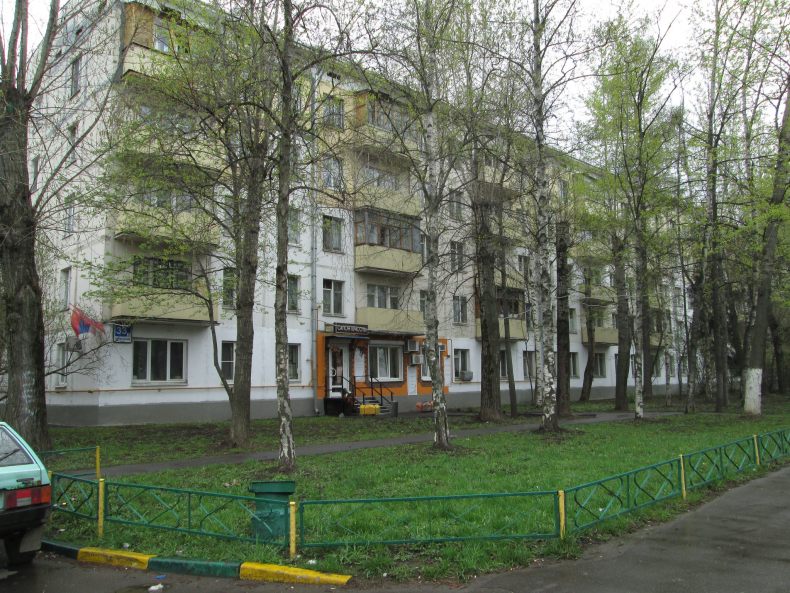People who work on the history of Russia and especially of the Soviet Union know that a failsafe way to get people interested in your particular niche is to use the word ‘resistance’. You may be interested in poetry, clothes, furniture, ceramics, whatever, from the Soviet period, but just writing about that in and of itself, on its own terms, is not enough for the funding bodies and the popular publishers. Instead, what you do is say that the length of skirts, the design of kiosks, the precise form of lyric poetry, was a way in which the wearer or designer of the skirt, the kvass vendor or the lyric poet could contest the ‘regime’ in a way that didn’t involve directly engaging in active ‘dissidence’. However, few would ever have guessed that one day, Khrushchyovki could become a form of ‘resistance’.
Khrushchyovki – a pun deriving from the name of Nikita Khrushchev and Trushchoba, the Russian word for slum – are five-storey blocks of flats built en masse across the Soviet Union, mainly in the late 1950s and early ’60s. They were, at the time, a humane and much-needed response to the strange architectural priorities of Stalinism, which had, for 20 years, squandered a huge amount of Soviet resources on vanity projects – opulent skyscrapers for ministries, crenellated and majolica-clad luxury flats for the nomenklatura, grand prospects, and magnificent metro stations – rather than workers’ housing for the alleged ruling class of this ‘workers and peasants state’. Soon after Stalin’s death, Khrushchev announced the cancellation of this neoclassical ‘excess’, in favour of mass production to rehouse the millions forced into overcrowded housing (or worse) as a result of Soviet industrialisation and enormous war damage. The results were quick, cheap, simple, and intended to be temporary – and within a couple of decades, became one of the most obvious emblems of the squalor and homogeneity of the Soviet landscape. Now, 60 years later, the Moscow city council has announced a massive demolition programme of its ‘five-storey buildings’, as they are euphemistically known. The result has been a wave of protest from residents and others. Why?
‘Five-storey’ or Khrushchyovki housing in the Cheryomushki district of Moscow. Photo: Owen Hatherley

Compared either with the high-ceilinged, parquet-floored Stalinist blocks that preceded them, or even the equally mass-produced Brezhnev-era towers and slabs that followed, Khrushchyovki are not particularly good housing. Uninspired design, tiny rooms, shabby materials, and messy balcony extensions make them a fixture in, for instance, the ‘Ugly Moscow’ Instagram account. For the elderly or infirm, the lack of lifts makes them either unpleasant to impossible to live in. What they have in their favour is large green spaces and small scale, which make them relatively intimate and pleasant in a city that can be overpowering and monolithic. Built as public housing, most flats are privately owned, albeit on land that is still state property, and many of the buildings’ defects could be addressed by insulation (as with buildings in Poland and the Czech Republic), and by added lifts (as with St Petersburg’s 19th-century tenements).
More importantly, perhaps, the city’s plans focus on what are, roughly, the inner suburban parts of Moscow, those just outside the maniac prices of the city’s central zone, Moscow’s equivalents of, say, Tottenham or Woolwich. Given their management of the city up to this point – an increasingly pleasant if gentrified centre, and increasingly demented overdevelopment of high-rise flats just outside it – residents are wise to be suspicious of the ruling party United Russia’s plans for the Khrushchyovki and the people that live in them. Nonetheless, to see the likes of the Economist praise the results of Soviet mass-production and public housing is a faintly surreal side-effect of the protests. It’s not hard to imagine how complimentary they would be about a proposal for a new wave of decent public housing in the extremely unequal and uneven Russian capital – but then, no Russian government will be advocating that any time soon.



